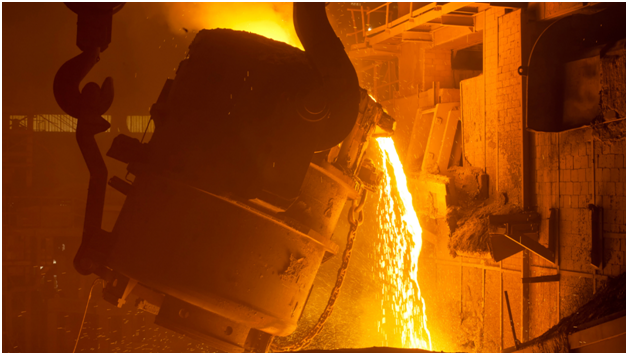
All production industries have an impact on the environment, with various production processes emitting greenhouse gases, consuming large quantities of water, and generating waste products. However, in recent years, the steel industry has taken steps to reduce its environmental impact through innovations in technology, recycling programs, and other initiatives. In this blog post, we will explore some of the ways in which the steel industry is working to become more sustainable.
One of the primary ways in which the steel industry is reducing its environmental impact is through the development and adoption of innovative technologies. One such technology is the electric arc furnace (EAF), which uses electricity to melt scrap steel and produce new steel products. Compared to traditional blast furnaces, EAFs consume less energy, emit fewer greenhouse gases, and generate less waste. As a result, EAFs are becoming an increasingly popular choice for steelmakers, particularly in regions with abundant sources of scrap steel.
Another innovative technology that is being used in the steel industry is hydrogen-based steelmaking. Hydrogen can be used as a reducing agent in steel production, replacing the use of coal and coke. This not only reduces greenhouse gas emissions but also produces a purer form of steel. Several steelmakers have already begun to explore the use of hydrogen in steel production, and the technology is expected to become more widespread in the coming years.
In addition to these technological innovations, the steel industry is also focused on increasing the amount of steel that is recycled. Steel is one of the most recycled materials in the world, with an estimated recycling rate of around 85%. However, there is still room for improvement, particularly in developing countries where recycling infrastructure is often lacking.
To increase the amount of steel that is recycled, steelmakers are working to improve the design and recyclability of their products. This includes using more easily recyclable materials and designing products with disassembly in mind. Additionally, steelmakers are investing in recycling infrastructure, such as sorting and processing facilities, to make it easier and more cost-effective to recycle steel.
Another initiative that is gaining traction in the steel industry is the use of circular economy principles. Rather than treating steel as a disposable commodity, circular economy principles emphasize the reuse and recycling of materials to create a closed-loop system. This not only reduces waste but also conserves resources and reduces greenhouse gas emissions.
One example of a circular economy initiative in the steel industry is the use of industrial symbiosis. This involves the sharing of resources and waste products between different companies, with the aim of creating a closed-loop system that maximizes resource efficiency. For example, a steel company may share waste heat with a nearby energy plant, which can use the heat to generate electricity.
The steel industry is also working to reduce its environmental impact through better management of its waste products. Steel production generates several waste products, including slag, dust, and sludge. Historically, these waste products were disposed of in landfills or other disposal sites, but this is no longer considered a sustainable option.
Instead, steelmakers are exploring ways to reuse and recycle these waste products. For example, slag can be used as a construction material or as a substitute for cement in concrete production. Dust and sludge can be processed to recover valuable metals and minerals, reducing the need for virgin raw materials.
In conclusion, the steel industry is taking significant steps to reduce its environmental impact through a range of innovative technologies, recycling programs, and other initiatives. From the development of electric arc furnaces and hydrogen-based steelmaking to the use of circular economy principles and better waste management, the industry is committed to becoming more sustainable. While there is still work to be done, these initiatives represent a positive step towards a more sustainable future for the steel industry and the planet as a whole.
